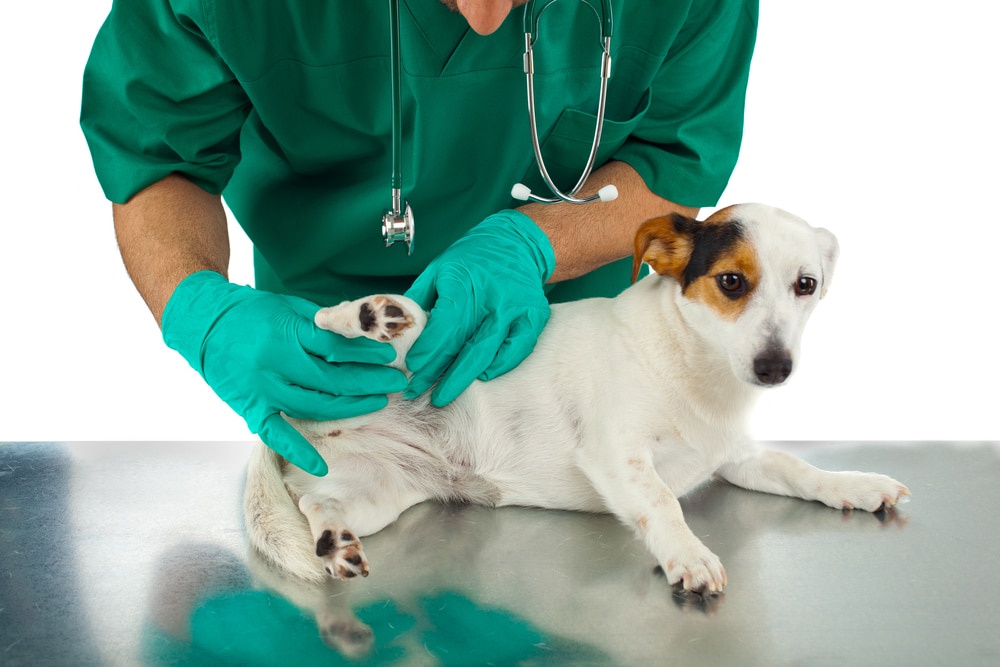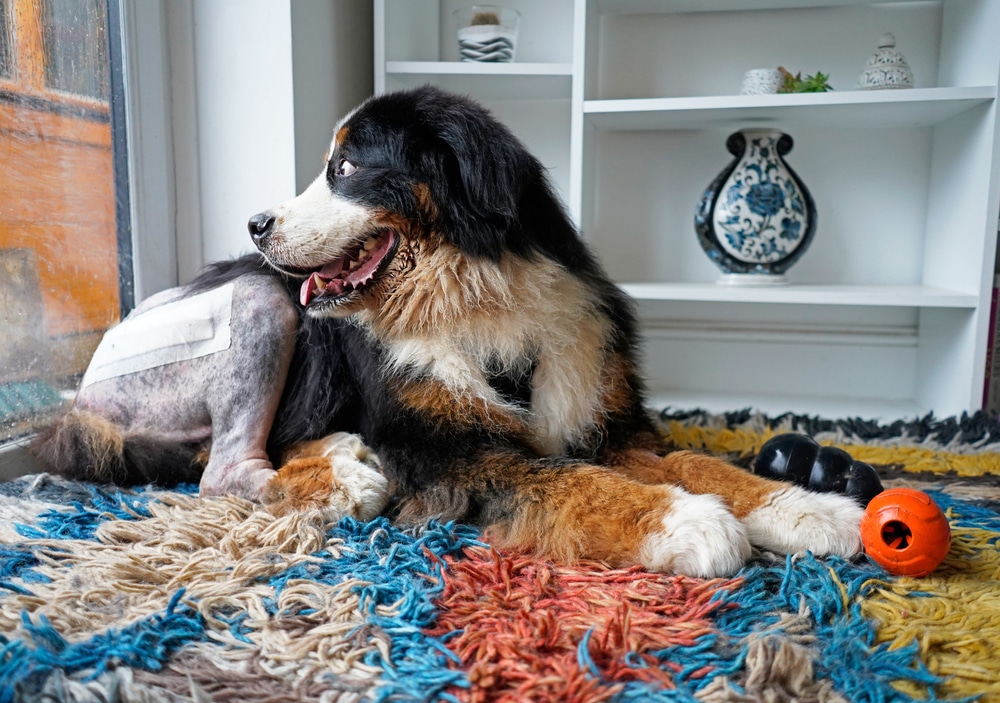Are you one proud owner of a senior dog and noticed that sometimes it’s not as happy to go for a run as it used to be? Or maybe when you tried to pet your dog around its hips, it made a crying sound? Chances are it might be having pain in its hips. Just like old grannies and grandads. This could be hip dysplasia, but what is hip dysplasia in dogs anyway?
Hip dysplasia is a common disease of the hip joint in dogs. It affects dogs that are medium or large breeds, such as the Samoyed, Labrador Retriever, German Shepherds, and Rottweilers.
Table of Contents
What Is Hip Dysplasia In Dogs?

This disease affects the hip joint and could lead to pain and the inability of your dog to function regularly. The hip joint is made of two parts and looks like a ball and socket that fit perfectly together when they are normally developed. In some cases, when they do not fit properly, the ball could slip out of the socket, which could lead to dislocation of the hip. In other cases, when the ball does not fit in the socket, it moves wrongly, which leads to pain whenever the dog walks.
This disease could be genetic, but it also could be obtained at a young age, when the puppies are still growing. Certain training or having a chubby puppy could put pressure on the joint, which could eventually lead to damage to the cartilage and cause pain, and, in the long run, lead to the development of osteoarthritis (which is a degenerative joint disease).
What Are The Signs Of Hip Dysplasia?
If you have a senior dog, there are several signs to look for. If your dog takes its time in the morning to get up or if they make it unwillingly, that’s one. And if you are doing your normal walking routine, but they start to limp from time to time, this should be a red flag for making a trip to the doctor.
In younger dogs, this may not be the case, but what you may notice is that your puppy suddenly is not happy when it needs to walk up the stairs, or maybe it sits and lays down in a silly way.
Also, has it happened to you that you give them a good scratch around their hips and then they give a sudden painful bark? This means that something in that area is causing severe pain. Or do you find it unusual that a puppy wouldn’t be as happy as before when it goes to the park and runs? This is another sign.
How Do Veterinarians Diagnose Hip Dysplasia?
When you visit the vet, be prepared to answer a million questions, and trust me, most times vets get around 60% of the diagnosis just by talking to the owner. After talking to you, the next thing your vet will probably do is a physical examination where they may pull your dog’s legs here and there and everywhere. It doesn’t look good, I know, but what the vet is actually doing is seeing what movements your dog will react to.
After the initial examination, your vet will recommend x-rays. When it comes to hip dysplasia, there is a certain way the vet will position the dog when they take the x-rays. What the vet likes to see is how the head of the hip bone (the ball) sits in the acetabulum (the socket) and if there are any signs of wear on the cartilage.
What Happens After The Diagnosis?
I know hearing your dog is diagnosed with hip dysplasia may be hard. This is especially true if you have followed the instructions given by the vet while it was growing up. Sometimes though it is just genetics and there is not much anyone can do about it. As an owner that had a labrador that had dysplasia, I can tell you that it doesn’t have to be that bad.
In my experience, we made sure she was on the lighter side. As a vet, I always say that any extra weight puts extra pressure on an already painful hip. Another thing you could do is swim. This is a good way to keep your dog active. It is an exercise that could make the muscles that hold the hip in place stronger. Plus, it doesn’t put big pressure on anything when exercising, which is a double win.
In other cases, your vet may recommend surgery to relieve the pain. Because sometimes medication itself may not be enough for your dog to function on a daily basis. And no owner wants to see their pet suffering. The surgery the vet will suggest may seem complicated but if the recovery rules are properly followed, then your dog will be pain-free and back to itself in no time.
Regardless of how you approach helping your dog handle hip dysplasia, we always recommend talking to your vet.
Conclusion: What Is Hip Dysplasia?
This degenerative joint disease may sound scary because, to be honest, it is. But let me assure you that it is very much preventable as well as manageable. Nowadays, there are many options for pain management or for surgical treatment. Dogs with this condition get to live to old age and still be happy while getting there.
So, are you noticing any of the signs of hip dysplasia in your dog? Have you had a dog with hip dysplasia before? Let us know in the comments below!
